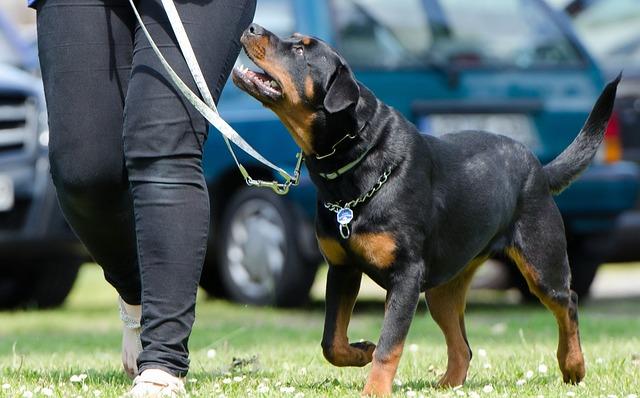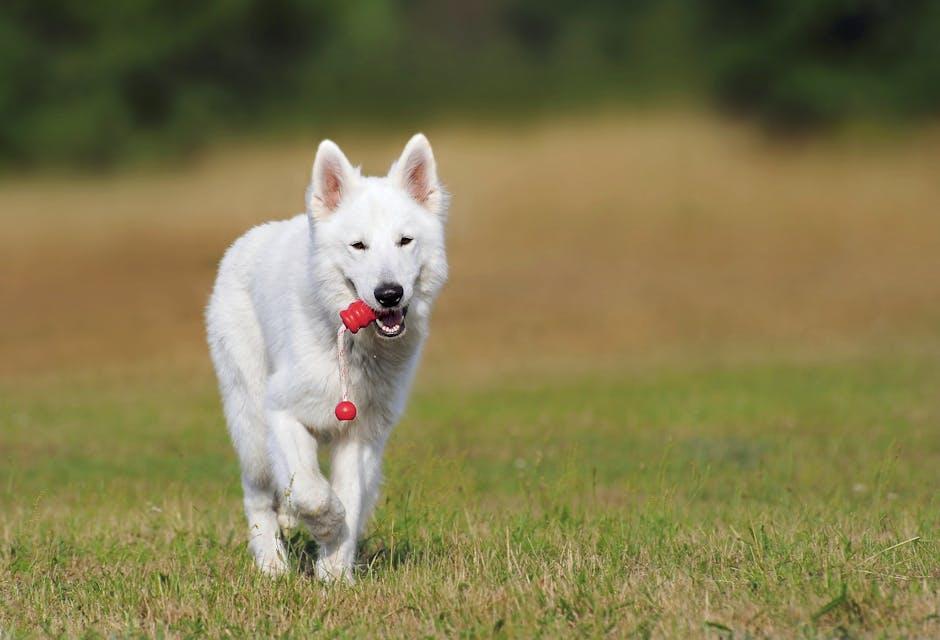How to Train a Dog to Follow Multiple Commands in Sequence

Training a dog to follow multiple commands in sequence is a rewarding endeavor that enhances the bond between you and your canine companion while also boosting their cognitive abilities. Whether you’re aiming to impress at the local dog park or simply want a well-behaved pet, mastering this skill can transform your dog’s behavior and responsiveness. This article will guide you through the essential steps of teaching your dog to understand and execute a series of commands, offering practical tips and techniques that cater to dogs of all ages and breeds. With patience, consistency, and the right approach, you can unlock your dog’s potential to perform complex tasks with ease and confidence.
Understanding the Basics of Dog Training
Teaching your dog to follow multiple commands in sequence requires patience, consistency, and a touch of creativity. Begin by ensuring your furry friend is comfortable with each individual command. Mastery of basic commands such as sit, stay, and come forms the foundation for more complex sequences. Utilize short, focused training sessions to maintain your dog’s attention and reinforce learning. As your dog becomes more adept, start integrating commands into small sequences. For instance, you might ask your dog to sit, then stay, and finally come when called. Remember to reward your dog with treats or praise after each successful sequence to reinforce positive behavior.
- Start Small: Begin with two-command sequences and gradually increase complexity.
- Use Visual Cues: Hand signals can help reinforce verbal commands.
- Be Consistent: Use the same words and signals each time.
- Stay Positive: Maintain a calm demeanor and use positive reinforcement.
As you progress, experiment with different sequences to keep the training engaging for your dog. Varying the order of commands not only keeps things interesting but also challenges your dog to think critically and respond accurately. Remember, consistency and patience are key; each dog learns at their own pace, so tailor your approach to suit your dog’s unique needs and abilities.

Building a Foundation with Simple Commands
Before embarking on the journey of teaching your dog to execute a series of commands, it’s crucial to establish a strong foundation with basic commands. This foundational step ensures your furry friend understands and responds reliably. Begin with simple commands such as sitting, staying, and coming. These form the building blocks for more complex sequences. Using positive reinforcement techniques, such as treats or praise, can effectively encourage your dog to follow instructions. Remember, consistency is key; practice these commands in various environments to ensure your dog remains attentive.
Here are a few essential tips to keep in mind as you build this foundation:
- Keep training sessions short to maintain your dog’s interest and avoid fatigue.
- Use clear, distinct commands to prevent confusion.
- Be patient; every dog learns at their own pace.
- Celebrate small victories with rewards and affection.
By mastering these simple commands, your dog will be better prepared to tackle sequences with confidence and enthusiasm.

Teaching Your Dog to Link Commands Together
Training your dog to execute a series of commands in sequence can be both rewarding and fun. Start by ensuring your dog has a solid understanding of individual commands. Consistency is key, so choose commands that your dog already knows well. Once you’re confident in your dog’s ability to follow these commands separately, you can begin to link them together. Begin with a simple combination, such as “sit” followed by “stay”. Use a treat or clicker to mark each successful completion of the sequence, reinforcing the behavior. Over time, gradually increase the complexity by adding more commands to the sequence.
- Practice Regularly: Short, frequent training sessions are more effective than long, infrequent ones.
- Be Patient: Every dog learns at its own pace, so be patient and adjust the training as needed.
- Use Positive Reinforcement: Rewards such as treats, praise, or playtime can motivate your dog to follow the sequence correctly.
- Stay Consistent: Use the same verbal cues and hand signals to avoid confusing your dog.
By incorporating these tips into your training routine, you’ll help your dog understand how to follow multiple commands in sequence, strengthening your communication and bond with your furry friend.

Reinforcing Sequential Command Training with Consistency
To effectively train your dog to follow multiple commands in sequence, consistency is key. Consistency not only reinforces the commands but also helps your dog understand the order and importance of each task. Begin by establishing a clear set of commands that your dog is already familiar with. Practice these commands individually before attempting to string them together in a sequence. Consistency in your tone, gestures, and timing will ensure that your dog can predict and understand what is expected of them. Make sure to use the same words and hand signals each time, as varying these can confuse your dog and slow the learning process.
- Start small: Begin with just two commands in sequence, such as “sit” followed by “stay”.
- Be patient: Allow your dog time to process each command before moving to the next.
- Reward consistently: Use treats or praise immediately after your dog successfully completes the sequence to reinforce positive behavior.
- Practice regularly: Daily practice sessions will help solidify the sequence in your dog’s mind.
- Gradually increase complexity: Once your dog is comfortable, slowly add more commands to the sequence.
By maintaining consistency in your training approach, you’ll help your dog become more confident and proficient in executing multiple commands in sequence. Remember, a consistent training environment fosters a clear understanding, reducing the chances of your dog becoming confused or frustrated.
To Wrap It Up
training a dog to follow multiple commands in sequence is a rewarding endeavor that requires patience, consistency, and understanding. By breaking down the training process into manageable steps, utilizing positive reinforcement, and gradually increasing the complexity of command sequences, you can effectively teach your dog to perform a variety of tasks in a structured order. Remember that each dog learns at its own pace, so it’s important to remain patient and adjust your approach as needed. By investing time and effort into this training, you not only enhance your dog’s abilities but also strengthen the bond between you and your canine companion. With dedication and practice, you and your dog will be well on your way to mastering the art of sequential commands.



